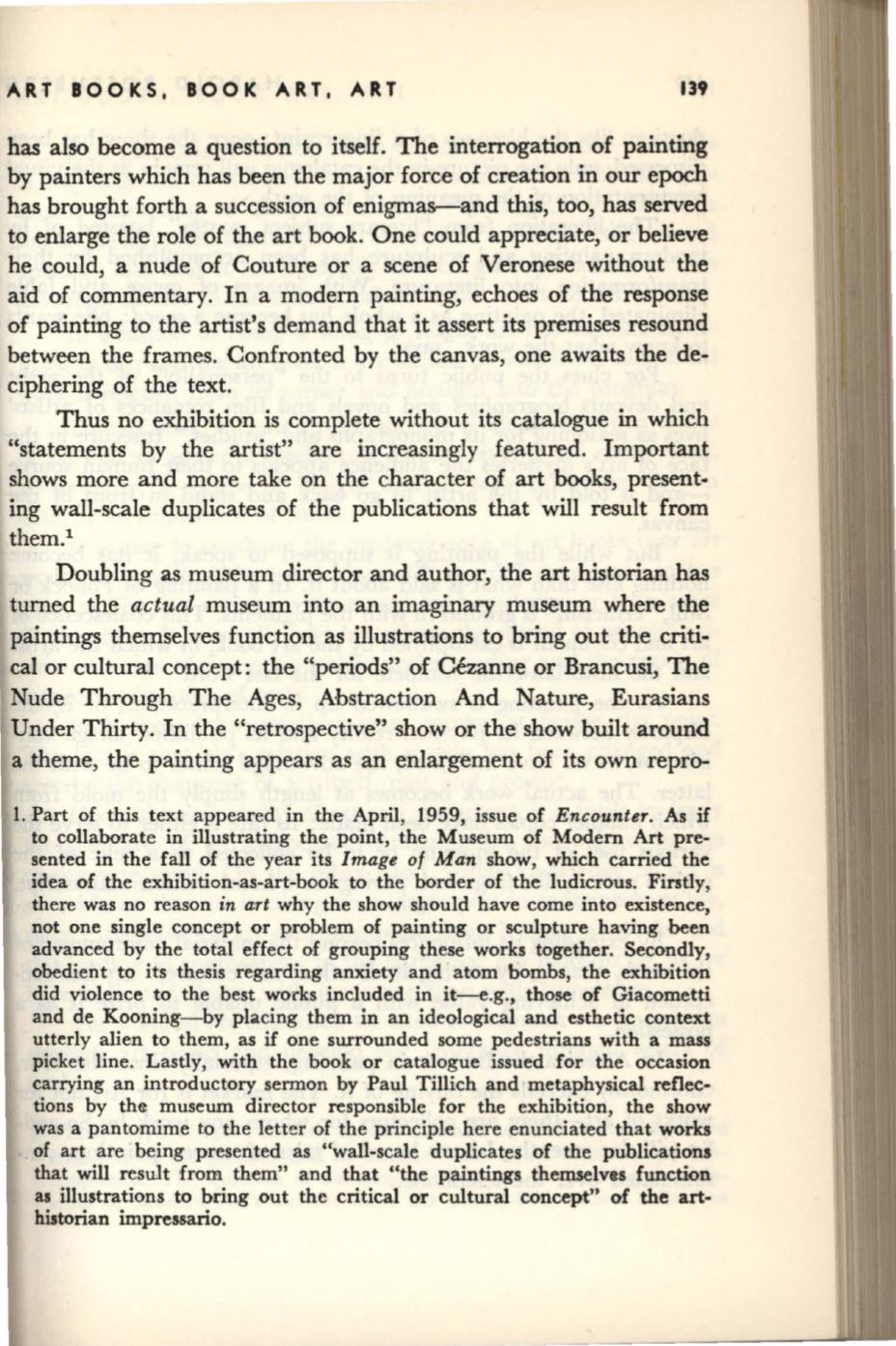
ART BOOKS, BOOK ART, ART
139
has also become a question to itself. The interrogation of painting
by painters which has been the major force of creation in our epoch
has brought forth a succession of enigmas--and this, too, has served
to enlarge the role of the
art
book. One could appreciate, or believe
he could, a nude of Couture or a scene of 'Veronese without the
aid of commentary. In a modem painting, echoes of the response
of painting to the artist's demand that it assert its premises resound
between the frames. Confronted by the canvas, one awaits the de–
ciphering of the text.
Thus no exhibition is complete without its catalogue in which
"statements by the artist" are increasingly featured. Important
shows more and more take on the character of art
books,
present–
ing wall-scale duplicates of the publications that will result from
them.
1
Doubling as museum director and author, the art historian has
turned the
actual
museum into an
imaginary
museum where the
paintings themselves function as illustrations to bring out the criti–
calor cultural concept: the "periods" of cezanne or Brancusi, The
Nude Through The Ages, Abstraction And Nature, Eurasians
Under Thirty. In the "retrospective" show or the show built around
a theme, the painting appears as an enlargement of its own repro-
1.
Part of this text appeared in the April, 1959, issue of
Encounter.
As if
to collaborate in illustrating the point, the Museum of Modern Art pre–
sented in the fall of the year its
Image of Man
show, which carried the
idea of the exhibition-as-art-book to the border of the ludicrous. Fintly,
there was no reason
in art
why the show should have come into existence,
not one single concept or problem of painting or sculpture having been
advanced by the total effect of grouping these works together. Secondly,
obedient to its thesis regarding anxiety and atom bombs, the exhibition
did violence to the best works included in it-e.g., those of Giacometti
and de Kooning-by placing them in an ideological and esthetic context
utterly alien to them, as if one surrounded some pedestrians with a mass
picket line. Lastly, with the book or catalogue issued for the occasion
carrying an introductory sermon by Paul Tillich and metaphysical reflec–
tions by the museum director responsible for the exhibition, the show
was a pantomime to the letter of the principle here enunciated that worb
of art are being presented as "wall-scale duplicates of the publicationJ
that will result from them" and that "the paintings themselves function
as illustrations to bring out the critical or cultural concept" of the art–
historian impressario.


